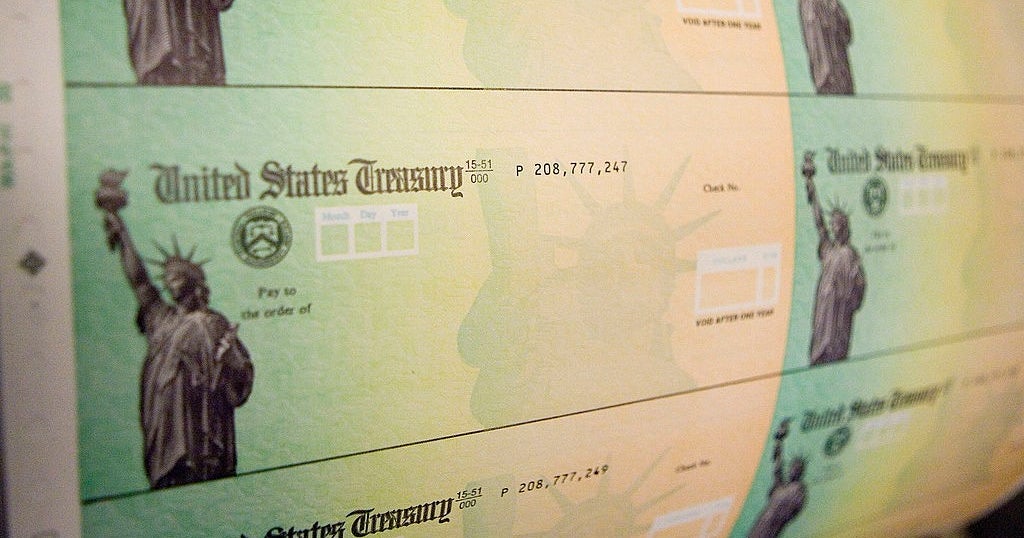Opioid epidemic cost U.S. more than $600 billion over 4 years
The opioid epidemic, which has taken hundreds of thousands of lives in the U.S., has also taken a massive toll on the economy, according to a new report released ahead of a landmark trial against drugmakers set to begin Monday.
The total economic cost of the crisis, declared a federal public health emergency in 2017, reached at least $631 billion from 2015 to 2018, an analysis from the Society of Actuaries (SOA) found. That is more than the gross domestic product of such countries as Belgium, Sweden and Taiwan.
Three drug distributors — AmerisourceBergen, Cardinal Health and McKesson Corporation — and two manufacturers — Johnson & Johnson and Teva — have reportedly offered a total of $50 billion to settle more than 2,000 lawsuits filed by towns, cities, counties and tribal governments and avoid going to trial.
Yet that sum represents just a fraction of the hundreds of billions of dollars the opioid crisis, allegedly fueled in part by these companies, is estimated to have cost the U.S. economy.
Nearly one-third of those costs, or $186 billion, fell on federal, state and local governments required to handle the surge in deaths, health care, legal and other expenditures from the crisis, the actuaries group estimated. The remainder, $445 billion, was borne by the private sector and individuals.
And it's not over. The crisis cost the economy up to another $214 billion in 2019, according to the authors of the study, which was conducted by Milliman, a provider of corporate actuarial services. Those losses, in lives and dollars, are likely to mount.
"Looking at where it's going to go in the future, provisional estimates from the Center for Disease Control and Prevention show that we might be starting to plateau in terms of overdose deaths. But it's too early to tell if that's part of a turnaround or a momentary blip," said Stoddard Davenport, a health care management consultant with Milliman and one of the study's authors.
Lost lifetime earnings
The largest losses from the opioid crisis stem from mortality costs, chiefly the lost projected lifetime earnings for those who died prematurely by overdose, according to the report. The $253 billion in victims' lost earnings accounted for 40% of the estimated total.
Nearly 400,000 people died from opioid overdoses from 1999 to 2017, according to the Centers for Disease Control and Prevention.
"We will be watching how that number grows, since a large portion of these costs are the premature death mortality costs. It's going to be a leading indicator into how big these excess costs might get," said Dale Hall, managing director of research at SOA.
Excess health care spending
A third, or $205 billion, of the estimated economic losses are attributed to excess health care spending for opioid abusers, including inpatient and outpatient visits as well as care for family members.
"We have found that as many as one in 30 households may have a family member in the home that has opioid use disorder," Davenport said. "It underscores that it touches a lot of people in a lot of different ways, and paying attention to that nuance is helpful in determining where we have to go to respond."
He added that "family members have a more complicated health experience by having household exposure to the disorder."
The study also considers the impact of opioids on newborns, who may suffer from withdrawal and other health problems when born to parents who abuse opioids. Although other estimates have sought to tabulate the overall economic impact of opioid abuse, many don't account for such neonatal health care costs.
"We are trying to get a more holistic picture of where these excess costs are coming from," Hall said.
Drain on the legal system
Criminal justice costs — which include police protection, legal and adjudication fees, correctional facility costs, and more — totaled $39 billion, or 6% of the total cost from 2015 to 2018, according to the report. Child and family assistance and education programs accounted for the same expenditures.
The remaining costs, at $96 billion, stemmed from lost productivity associated with absenteeism, reduced labor force participation, incarceration for opioid-related crimes and employer spending for workers' compensation benefits for employees hooked on opioids.
These estimates, of course, don't paint a complete picture of the enormous burden the opioid crisis has placed on society.
"There is a lot of nuance that goes into a person's life and experience with opioid use disorder. We capture some of how it impacts a user's life in terms of how it plays out economically," Davenport said. "This is only what you can measure in terms of economic activity. The impact on quality of life and their ability to fulfill roles they want to fill in their families and jobs — there is a lot that goes on beyond the economic activity."



